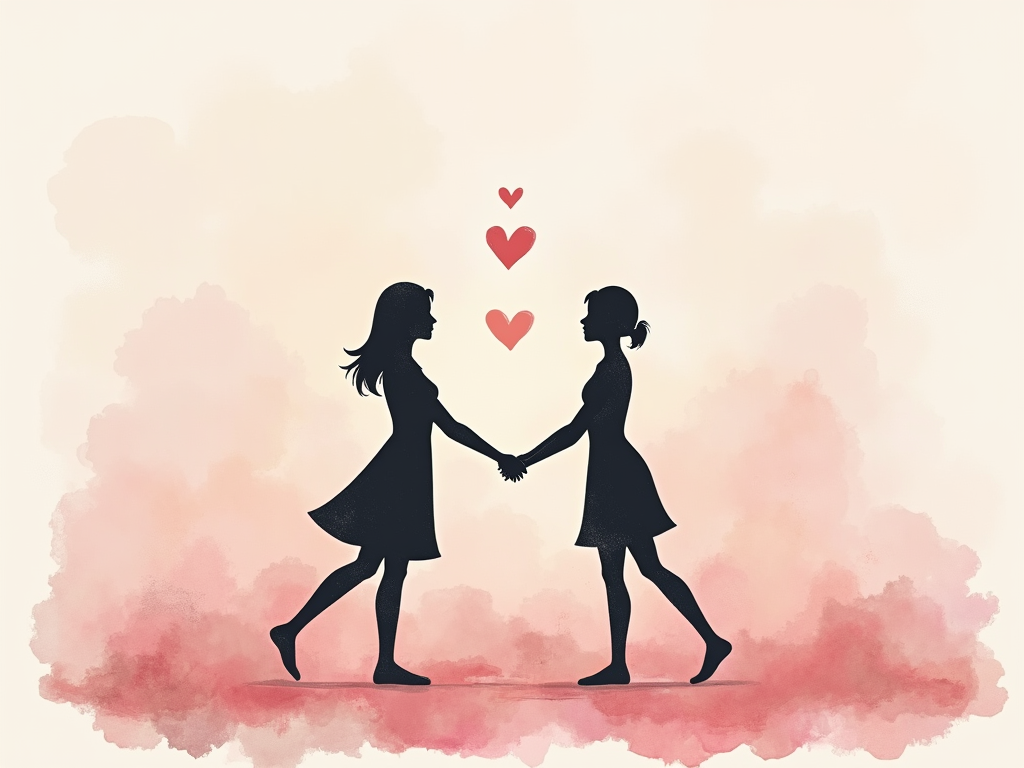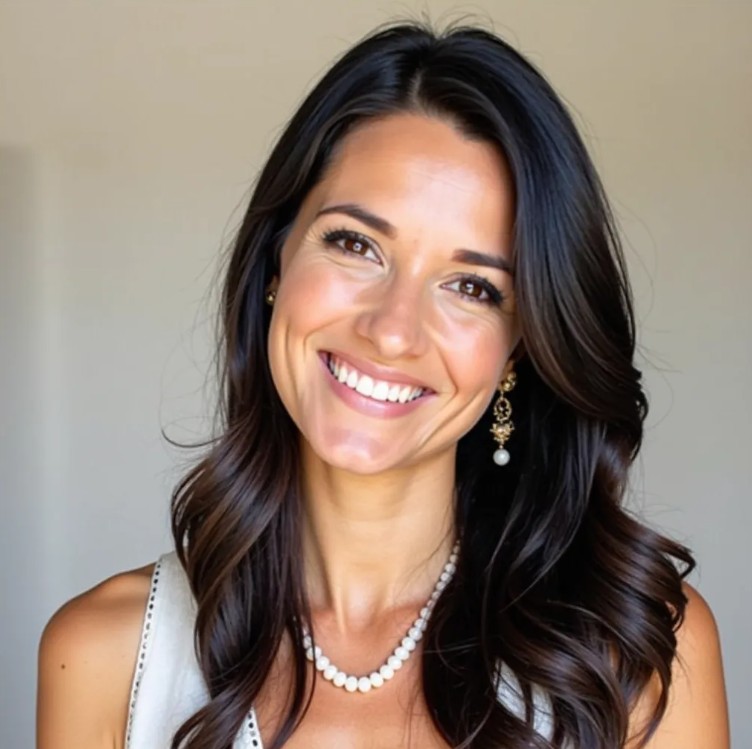
Is Doechii a Man? Understanding the Artist’s Identity and ‘Only Dating Queer Men’ Statement
Reading time: 8 minutes
Table of Contents
- Introduction: The Question of Doechii’s Identity
- Who is Doechii? Background and Rise to Fame
- Doechii’s Gender Identity: The Facts
- Understanding Doechii’s “Only Dating Queer Men” Statement
- Media Representation and Public Perception
- Navigating the Identity Spectrum in Modern Dating
- Respecting Artists’ Privacy in the Digital Age
- Beyond Labels: Creating Authentic Connections
- Frequently Asked Questions
Introduction: The Question of Doechii’s Identity
In today’s digital landscape, celebrities’ personal lives often become subjects of intense public scrutiny and speculation. Rising hip-hop artist Doechii has faced numerous questions about her gender identity, particularly after statements about her dating preferences circulated online. This confusion illustrates how quickly assumptions can spread in our interconnected world, especially when it comes to identity and sexuality.
The question “Is Doechii a man?” represents more than simple curiosity—it reflects broader conversations about gender expression, identity, and the sometimes blurry lines between public personas and private lives. This article aims to clarify misconceptions while respecting the artist’s self-identification and exploring the nuances of identity in modern dating contexts.
Who is Doechii? Background and Rise to Fame
Jaylah Hickmon, professionally known as Doechii, emerged as a powerful voice in hip-hop after her 2020 single “Yucky Blucky Fruitcake” gained viral attention on TikTok. Born and raised in Tampa, Florida, Doechii’s distinctive flow, versatile vocal style, and unapologetic self-expression quickly attracted industry attention, leading to her signing with Top Dawg Entertainment and later Capitol Records.
Her breakthrough EP “Oh the Places You’ll Go” and subsequent hits like “Crazy” and “Persuasive” established her as an innovative force in music. Doechii’s artistic persona embraces fluidity and defies easy categorization—a trait that extends to her personal expression and has sometimes led to misconceptions about her identity.
Career Milestones
Doechii’s journey includes several defining moments:
- 2020: Released “Yucky Blucky Fruitcake,” which went viral on TikTok
- 2021: Dropped the EP “BRA-LESS”
- 2022: Signed to Top Dawg Entertainment/Capitol Records
- 2022: Released “Persuasive” and collaborated with SZA on the remix
- 2022: Named to XXL’s Freshman Class
- 2023: Continued to release singles while working on her debut album
Artistic Expression and Public Persona
Doechii’s artistry is characterized by her willingness to experiment with different sounds, aesthetics, and presentations. Her videos showcase diverse styles ranging from hyper-feminine to androgynous looks, reflecting the multidimensional nature of her creative expression. This fluidity in her artistic presentation may have contributed to some public confusion about her gender identity.
Doechii’s Gender Identity: The Facts
To address the central question directly: Doechii is not a man. Jaylah Hickmon identifies as a woman and uses she/her pronouns. The confusion about Doechii’s gender appears to stem from several factors:
- Her versatile fashion choices and aesthetic presentations in music videos
- Statements about her sexual orientation and dating preferences
- The tendency for social media to amplify misunderstandings
- The conflation of gender identity with sexual orientation
Throughout her career, Doechii has been open about being a woman while also embracing a fluid approach to self-expression. In interviews, she has consistently referred to herself using female pronouns, and official industry communications also identify her as such.
Self-Identification and Public Statements
In various interviews, Doechii has spoken about her experiences as a woman in the music industry. For instance, when discussing her bold music video for “Crazy” with Billboard, she referred to the importance of “women being able to express rage” and “show that side of themselves.” These statements clearly indicate her identification as a woman, despite any confusion that may exist online.
Her lyrical content frequently addresses experiences from a female perspective, further confirming her gender identity. The misunderstanding appears to be a classic case of conflating sexual orientation with gender identity—two distinct aspects of a person’s identity.
Understanding Doechii’s “Only Dating Queer Men” Statement
One source of confusion about Doechii’s gender stems from statements about her dating preferences. In interviews and social media posts, Doechii has mentioned that she primarily dates “queer men” or has a preference for “feminine men.” These statements about her romantic preferences have sometimes been misconstrued as indications about her own gender identity.
“I only date queer men… I like feminine energy, I like that yin yang, that balance. I like a man who’s comfortable with himself.”
— Paraphrased from Doechii’s interviews
This statement reflects Doechii’s sexual orientation and dating preferences as a woman attracted to certain expressions of masculinity—specifically men who embrace aspects of themselves that might traditionally be coded as feminine or who identify as queer. This preference has nothing to do with her own gender identity but rather speaks to the qualities she values in potential partners.
Sexual Orientation vs. Gender Identity
A fundamental distinction needs to be made here:
- Gender identity refers to one’s internal sense of being male, female, a blend of both, or neither
- Sexual orientation describes the pattern of emotional, romantic, or sexual attraction to others
Doechii identifying as a woman (gender identity) who is attracted to queer or feminine men (sexual orientation) reflects two separate aspects of her identity. The confusion online demonstrates how these distinct concepts are often incorrectly conflated in public discourse.
Media Representation and Public Perception
The question of Doechii’s gender illustrates how media representation and public perception can create and perpetuate misunderstandings about artists’ identities. In an age of viral information sharing, misconceptions can quickly become accepted as fact without proper verification.
| Factor | Impact on Public Perception | Reality | Consequence |
|---|---|---|---|
| Artistic Expression | Varied aesthetics in videos and performances lead to gender assumptions | Creative expression doesn’t equate to gender identity | Confusion between artistic choices and personal identity |
| Dating Preferences | Statements about dating “queer men” misconstrued | Reflects sexual orientation, not gender identity | Conflation of separate aspects of identity |
| Social Media Discourse | Amplification of misunderstandings through shares and comments | Information spreads without fact-checking | Misinformation becomes widespread |
| Media Coverage | Focus on sensational aspects of identity | Less attention to artist’s self-identification | Reinforcement of stereotypes and misconceptions |
Case Study: Social Media Spread of Misinformation
One notable example of how misinformation about Doechii’s gender spread occurred after an interview clip discussing her dating preferences circulated on Twitter (now X) and TikTok. Users began questioning whether Doechii was transgender or a man based solely on her statement about dating queer men. Within days, search trends for “Is Doechii a man” spiked, demonstrating how quickly such misconceptions can proliferate.
Comments sections filled with assumptions and questions, with many users confidently making incorrect statements without seeking verification from reliable sources or the artist’s own statements. This case illustrates the responsibility social media users have in verifying information before spreading it further.
Navigating the Identity Spectrum in Modern Dating
Doechii’s dating preferences highlight broader trends in modern dating, where many people are moving beyond traditional binary understandings of both gender and sexuality. Today’s dating landscape increasingly recognizes the spectrum nature of identity and attraction.
Evolving Understanding of Attraction
Many people, like Doechii, express preferences that don’t neatly fit into traditional categories. Someone might be attracted to specific expressions of gender rather than simply “men” or “women” as broad categories. This nuanced understanding of attraction acknowledges that we’re often drawn to specific qualities, energies, or expressions that transcend simplistic categorizations.
Spectrum of Attraction Factors (Beyond Binary Gender)
Data source: Composite analysis of modern dating preference studies (2018-2023)
This visualization illustrates how factors beyond binary gender increasingly influence attraction in modern dating contexts. For many people today, emotional connection, energy, and values take precedence over traditional gender-based attraction patterns.
Communication in Modern Dating
Doechii’s openness about her specific dating preferences highlights the importance of clear communication in modern relationships. Being explicit about what you’re looking for in a partner—whether related to gender expression, values, or personality traits—can help create more meaningful connections by establishing clear expectations from the start.
In a dating landscape with increasingly fluid understandings of identity, clear communication becomes even more essential. People who, like Doechii, have specific preferences about the type of energy or expression they’re attracted to benefit from articulating these preferences clearly to potential partners.
Respecting Artists’ Privacy in the Digital Age
The persistent questioning about Doechii’s gender identity raises important questions about boundaries and respect in fan-celebrity relationships. While public figures inevitably face scrutiny, there’s a difference between engaging with an artist’s public statements and making invasive assumptions about their personal identity.
Artists like Doechii navigate a complex balance between authentic self-expression and maintaining privacy. Fans and media outlets have a responsibility to respect the information artists choose to share while not demanding disclosures beyond what they’re comfortable revealing.
Balancing Public Interest with Respect
When engaging with artists’ identities online, consider these principles:
- Prioritize the artist’s own statements about their identity over speculation
- Recognize that artistic expression may not directly reflect personal identity
- Question your motivation for seeking certain information about an artist
- Consider whether your curiosity serves the artist or merely your own interest
- Avoid spreading unverified assumptions as facts on social media
As fans, our relationship with artists centers primarily on their creative output. While it’s natural to feel connected to artists whose work resonates with us, this connection doesn’t entitle us to intimate knowledge of all aspects of their identity or personal life.
Beyond Labels: Creating Authentic Connections
Doechii’s dating preferences and the public’s fascination with them reflect a broader cultural shift toward more nuanced understandings of attraction and connection. Rather than focusing exclusively on categories like “man” or “woman,” many people today prioritize qualities, energies, and authentic expression in their dating lives.
This approach to connection—seeking specific qualities rather than broad categories—offers valuable insights for anyone navigating the modern dating landscape. It encourages a more thoughtful consideration of what truly attracts us to others beyond conventional parameters.
Practical Tips for Authentic Dating
Drawing inspiration from Doechii’s clarity about her preferences, consider these approaches to more authentic connections:
- Reflect on your attraction patterns beyond simplified categories. What specific qualities consistently draw you to others?
- Communicate your preferences clearly but without being rigid. Authentic connection often surprises us by transcending our expected “types.”
- Challenge your assumptions about others based on outward appearance or expression. Like Doechii’s artistic fluidity, many people contain multitudes that defy easy categorization.
- Focus on connection quality rather than identity checkboxes. The most fulfilling relationships often develop when we prioritize how someone makes us feel over how they fit into predetermined categories.
- Practice respectful curiosity rather than making assumptions about someone’s identity or orientation.
Your Path Forward: Embracing Nuance in Identity & Connection
The conversation around Doechii’s identity reflects our collective journey toward more nuanced understandings of gender, sexuality, and human connection. Moving beyond the simplistic question “Is Doechii a man?” invites us into a richer conversation about how we express ourselves and connect with others in an increasingly fluid world.
As we navigate relationships in this evolving landscape, we’re all challenged to:
- ✓ Question our assumptions about others based on limited information
- ✓ Respect how individuals choose to identify and express themselves
- ✓ Recognize the difference between artistic expression and personal identity
- ✓ Communicate our own preferences and boundaries with clarity and confidence
- ✓ Approach connections with genuine curiosity rather than rigid expectations
The next time you find yourself curious about someone’s identity—whether a celebrity or a potential dating partner—pause to consider whether your curiosity comes from a place of connection or categorization. In a world constantly trying to place people in boxes, there’s revolutionary power in approaching each person as the complex, multidimensional individual they truly are.
How might your connections transform if you focused less on labels and more on the authentic energy exchange between you and another person? This shift in perspective doesn’t just change how we understand artists like Doechii—it changes how we experience all our relationships.
Frequently Asked Questions
Is Doechii transgender?
No, Doechii is not transgender. Jaylah Hickmon, known professionally as Doechii, is a cisgender woman who has consistently identified as female throughout her career. The confusion about her gender identity appears to stem primarily from statements about her dating preferences rather than her own gender identity. It’s important to distinguish between someone’s sexual orientation (who they’re attracted to) and their gender identity (who they are).
What did Doechii mean when she said she only dates “queer men”?
When Doechii stated she primarily dates “queer men,” she was expressing her attraction as a woman to men who embrace qualities that might traditionally be considered more feminine or who identify as queer. This statement reflects her sexual orientation and dating preferences, not her gender identity. She has explained in interviews that she values men who are comfortable with themselves and their own fluidity, appreciating the “yin yang” balance this creates in relationships.
Why do people confuse sexual orientation with gender identity?
The confusion between sexual orientation and gender identity is common because both relate to aspects of identity that influence how we understand ourselves and relate to others. However, they’re distinct concepts: gender identity refers to one’s internal sense of being male, female, both, or neither, while sexual orientation describes patterns of emotional, romantic, or sexual attraction. Media oversimplification, lack of education about LGBTQ+ topics, and binary thinking all contribute to this confusion. In Doechii’s case, her statements about being attracted to queer men (her orientation) were misinterpreted by some as statements about her own gender identity.

Article reviewed by Mateusz Kowalski, Family Psychologist | Navigating Generational Conflicts with Empathy, on May 2, 2025
